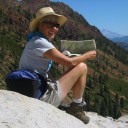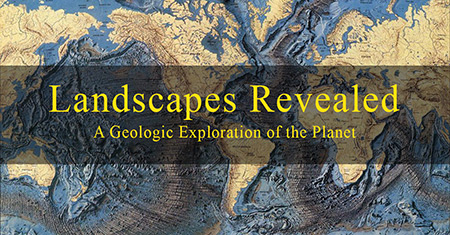Andalusian follow-up
On the way back to the U.S., I began reading a book that pulls together most of the historical events explored during this trip. If you are interested in learning more about the Islamic period in southern Spain, you may wish to check out this book: Ornament of the world: How Muslims, Jews, and Christians created a culture of tolerance...
Seville—the crown of Andalusia
Seville (Sevilla in Spanish) has been the dominant city in southern Spain for most of the past millennium. Located in the lower part of the Guadalquivir river valley just 60 km (40 miles) from the sea, it was a Roman city that grew greatly in size during the Islamic period after the caliphate (central governance) in Córdoba weakened and individual...
The world-famous, acorn-eating Spanish pig
Just an hour north of Seville (like Córdoba, located in the Guadalquivir river valley), the Sierra de Aracena is a tranquil rural world that feels far removed from the bustling city. Geologically, it's also a world away. This is the only place we are visiting in Spain that is beyond the realm of the Eurasian–African collision zone. Like Portugal, this...
Overlapping cultures in Córdoba
Heading north into the Guadalquivir valley, the landscape mellows, with gently rolling hills and flatter topography within which the river can meander. This change results from exiting the collision zone and entering the valley (called a foreland basin by geologists) into which sediments from the uplifted ranges to the south have been deposited. The young sediments here are mostly flat...
Where does your olive oil come from?
If your extra virgin olive oil is from Spain, it may very well be from the region around Baena—it's at the geographic center of Andalusia and it's the heart of the olive oil industry. You might even find this name on your bottle. Like vine, olives have a terroir and Baena is a "Denominación de Origen", meaning that its unique...
Granada—the place of pomegranates
The Alhambra is a top tourist attraction and Granada is full of visitors from all over the world. The site itself is spectacular, with panoramic views of the surrounding city and valley. In the photo below—looking southeast from a hill at the north edge of town with even more incredible views—it's easy to see why the rulers would have chosen...
Who were the moors, anyway?
Now that we have reached Granada, the last place to fall during the "reconquest", it seems time to reflect upon one of our primary motivations for a trip to this part of the world. After traveling throughout many parts of Latin America, we have become increasingly aware of the so-called "moorish influence" in the Americas. We had some vague notion...
Los Pueblos Blancos (The White Towns)
The area around Ronda has a large concentration of White Towns, so called because all buildings within these towns are painted white. Most of the roofs are made of brown or red tile. The area has been inhabited since prehistoric times, and was successively occupied by the usual cast of characters—Phoenicians, Carthiginians, Greeks, and Romans. But it was during the...
Surrounded by mountains and rich culture in Ronda (Spain)
Ronda means "round" in Spanish. The city is located in a roundish valley surROUNDed by mountains; the region is therefore referred to as the "Serranía de Ronda" (sierra=mountain). Within the valley, Ronda sits on a rocky promontory that has been additionally fortified by rock walls over the ages. Below is a view of Ronda looking north while hiking on a trail...
The Rock of Gibraltar (and Tangier update)
Once again, a post was accidentally "published" before completion. The announcement of completion provides an opportunity to publish a few photos of Gibraltar, a truly strange piece of Great Britain, now that we are back on the south coast of Spain. The northern "Pillar of Hercules", this block of limestone rock rises incredibly steeply on all sides—from the sea and...
Tarifa—the southernmost point in Europe
Tarifa is an enigma. This probably has something to do with its position separating two major continents by only 16 km (10–11 miles). As such, it has been strategically located, as one cultural group after another has moved north or south to gain control. Today, though, it is mainly a place for vacations and catching the ferry to Tanger. Long...
The terroir of sherry—Jerez de la Frontera
If you are like me, sherry has been something that is used for cooking, but is not much good for anything else, like drinking. But here in the place where sherry was invented, it's possible to get another perspective. It is not just the sweet stuff of Harvey's Bristol Cream. There are also varieties—such as fino and manzanilla—that are bone...
About the Blogger
 Karen (here with Mt. Shasta in background) is a geology professor emerita who aims to provide a "pocket geologist" for world travelers. Follow the blog to explore the landscapes of our planet and figure out what causes them to look the way they do.
Karen (here with Mt. Shasta in background) is a geology professor emerita who aims to provide a "pocket geologist" for world travelers. Follow the blog to explore the landscapes of our planet and figure out what causes them to look the way they do.













